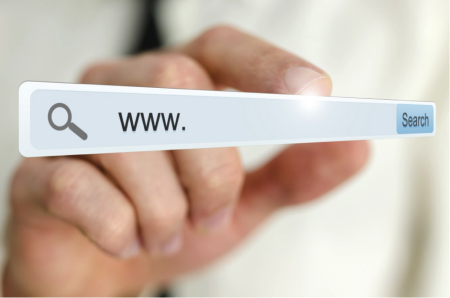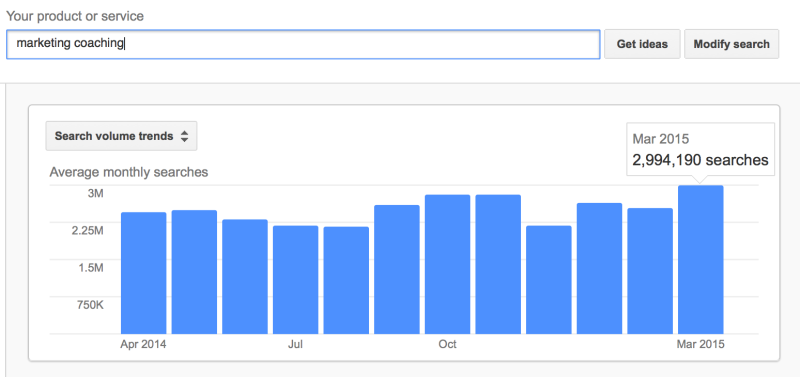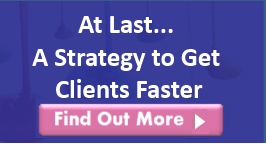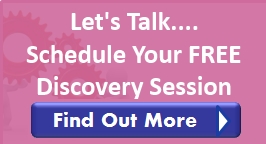
by Francis | Online Marketing
 Email marketing is still one of the most effective marketing methods today.
Email marketing is still one of the most effective marketing methods today.
It all starts with incorporating an irresistible free offer on your website that invites your site visitors to give their name and email address in exchange for it. The process adds their details to your subscriber list and allows you to stay in touch with them via email on a regular basis.
Here are 4 simple steps to get started:
Step 1: Getting Email Marketing Software.
The first thing you need is email marketing software. This software allows you to put a form on your website to collect email addresses and other details from visitors in exchange for something you offer for free. It is similar to the one opt-in form on my website where people can sign up for free training. Companies like Aweber, ActiveCampaign, Convertkit, and Mailchimp are great when you just start out. Simply choose one that fits your budget best.
Email marketing software enables you to set-up and schedule a series of automated emails and/or once-off emails, to all your subscribers. It also provides basic to detailed statistics to keep you updated with how many people open and read your emails.
Step 2: Develop an Irresistible Free Offer.
Your irresistible free offer is all about giving your website visitors a ‘taste’ of something they could not go without. It’s giving them something irresistible that THEY want in exchange for something YOU want ….their contact details.
The free offer can be anything from a PDF report, a small e-book, audio CD, workbook, e-course, checklist, video, consultation etc. Its purpose is to get your visitors to take notice and sign-up.
The moment your web visitors sign up to receive this free offer, they enter your client pipeline. People understand that by signing up, they are giving you permission to send them e-mails and to stay in contact with them. This is when the process for email marketing kicks into action and where you can (on a regular basis) provide your subscribers with valuable information, special offers and promotions via email to help build trust and credibility.
Tip: When you develop your free offer, put yourself in your ideal client’s shoes. Ask yourself what type of information would attract their attention and get them to sign up.
Step 3: Develop a Series of Auto-responders.
An auto-responder is an email that is send instantly/automatically to a subscriber who signs up to receive your free offer. It can be only one email or a series of emails that are delivered over a period of time.
Your first auto-responder will typically introduce you and your business, letting your audience know the type of information they’ll be receiving and how frequently you will be sending e-mails. It will also contain a link to your free offer or explain how the subscriber could access the offer.
Send a second, third and fourth auto-responder email our 2 or 3 days after the previous one. These follow-up emails typically contain valuable and useful info. It could be a tip that will help them solve a problem or a tool that they will find useful.
Tip: Auto-responders are excellent time savers. You set it up once and then basically forget about it. The first 3 to 4 emails are really important since they build the initial trust with your audience. So they should contain high value content your ideal clients can use.
Step 4: Create an On-going Email Marketing Plan.
The value of an email marketing plan is to build a great relationship with your list by sending top quality content to them on a regular basis.
The purpose is to stay in-front of your potential clients on a frequent basis. As much as we would like to think that our subscribers are always thinking of us (wouldn’t THAT be nice?), it’s unfortunately not the case. So, repetition is necessary to remind them of you, your offerings and your expertise.
Tip: Establish objectives and build a plan for the year. Start by mapping out what type of content to send on a regular basis. What type of information or topics you want your subscribers to receive? What promotions or campaigns you want to do and when you want to do it? This plan will help you reach out to your customers at the right time with the right information.
***
The truth is: You never know how long it will take somebody to decide to work with you. When you do not make use of an opt-in process on your website and email marketing, you lose the chance to:
- Capture contact details and build a database of people who are interested in your services;
- Regularly connect and provide additional value and

by Francis | Business, Online Marketing
 I was doing some research recently on internet usage – specifically in South Africa – and found some interesting stats that blew my mind!
I was doing some research recently on internet usage – specifically in South Africa – and found some interesting stats that blew my mind!
And I realised if you are living in SA, there are 9 billion reasons why investing in and building a website is a good idea.
What? You can’t even count that far? Well, me neither!
But it’s true…, there are 9 billion reason to invest in a website, because 9 billion rand is the amount of money spent PER YEAR by business-to-business (B2B) and business-to-consumer (B2C) e-commerce in SA.* In other words, people buying products and services via the Internet!
This is serious money. Spent by serious people…
And if this is the amount of money spend in only ONE small country, think about the money spend globally!
But let’s focus on South Africa as an example of some more mind-boggling Internet usage stats.
According to Internet World Stats* (2014), there are 23.6 million Internet users in South Africa – almost half of the population.
The biggest single age group is 30 to 49 years old – representing 42.9% of the online population. 18.6% is older than 50 years and about 30% is between 20 and 29 years old.
Thus, more than 60% of the Internet users in South Africa are part of the economically active population!
…and with an online spend of 9 billion per year they certainly have money to spend. (Whatever country you are in today, the stats will probably have the same trend.)
So in my humble opinion, I’d say there is some disposable income in there with your name on it!
BUT, if you cannot be found online, and if you do not have a website, you might be missing out on that income.
Apart from these mind-boggling stats – and before we get too overexcited about all these big numbers), here are 8 more practical reasons why you need to consider having a website for you business.
# 1: Your Clients / Potential Clients
Will potential clients use the Web to look for information specifically about you?
Yes, they will. Potential clients may hear about you from a friend or see your business card; perhaps read an article you’ve written or follow you on social media.
When people are curious to know more about you, they’ll probably do an internet search or try to find your website before they decide to contact you. Will they find you?
Will potential clients randomly search online for the specific services you offer?
Yes, they will. Doing some quick keyword research will reveal that tens of thousands (even millions) of searches monthly are done for the specific services or products you provide.

Will they be able to find you?
If you do not have a website, the chances are they won’t and you’ll have to pass this potential client opportunity on to a competitor who is online
Do your potential clients or target audience have web sites themselves?
If they do, they will without doubt consider the web to be an important business tool and might find it strange if you don’t have an online presence.
# 2: Your Own Business
Do you want to reach a wider client base?
A website is not geographically bound and can extend your reach. It helps you to increase your business footprint to attract potential new clients locally, nationally or even internationally?
Even when you have a purely services based business and only work with clients locally, a website can serve as a platform to diversify your income and or add additional passive income streams to your bottom line.
Do you want your business to project a professional image?
Off course you do…even when you work from home (and sometimes in your pyjamas – who needs to know 🙂) .
A well designed web site can project a professional brand to the world – no matter your office location or your clothing preferences.
Are you running on a tight budget and want to optimise marketing costs?
Creating a website, can be an initial capital outlay. Thereafter, continuous online marketing can be cost effective.
When you use your marketing efforts to drive traffic to your website, you can implement an effective lead capture strategy on your site, to trigger more business as well.
# 3: Your Competitors
Do your competitors have web sites?
The Internet opens up the availability of choices and many people love to “research and compare before they commit”. If you don’t have a website, but your competition does, potential clients cannot include you in their comparisons or decision making processes, and will probably go with who they find online. So you are losing out on potential income.
With a website you are on equal footing with you competitors and can inform and pre-sell interested prospects with all the reasons why they should rather work with you.
If your competitors do NOT have a website, you immediately differentiate yourself when you do have one. Plus it gives you the opportunity to attract web visitors (and potential clients) looking for those things you offer.
Are your competitors longer in business?
If you’re just starting out, a web site can help you to level the playing field. A well designed website gives the appearance that your business is well-established already and provides an added layer of trust.
So, this is what I want you to take from this article:
If you do not have a website yet, then evaluate your business and start taking action towards getting one in place.
If you already have a website – think about how you can refine and update it to help you stand out and attract more of your ideal clients.
To Your Success


by Francis | Marketing Tips, Online Marketing
 As a solo-preneur, the #1 goal of having a website is to attract more clients, right?
As a solo-preneur, the #1 goal of having a website is to attract more clients, right?
When someone new lands on your site, you want them to stay a bit longer, browse around and when they like what they see, take some sort of action… calling for an appointment or signing up for your mailing list.
This however pose a huge challenge for website owners.
The reason?
Competition on the web is increasing daily.
You do not only compete with other websites in your niche. You also compete with Social Media, Email, Smartphones, Online Games, News sites… all designed to minimise the time people spend on yours!
And on top of that you also compete with the dwindling attention span of people these days.
According to recent research by the National Center for Biotechnology, the average attention span of people is about 9 seconds, and the average website visitor has an attention span of 3-5 seconds the first time they’re on your site.
Not very good news for us as solo-preneurs…
So to use your website as a client attraction tool, you have to grab your visitor’s attention within the first couple of seconds, because only when you have their attention they’ll be persuaded to stay a bit longer and hopefully take the action you want them to take.
So, here are 4 easy-to-implement tips to grab their attention and get them to stay longer.
1. Know Who You Want To Keep on Your Site
In the first 3 seconds when someone lands on your site they ask the questions:
- What is it?
- Why should I care?
…and you have to instantly answer these questions through your logo, your headlines, your images and eventually every word you write.
Knowing your target audience, who you write for and thus want to keep on your site…PLUS understanding their needs, wants and desires, will make it easier to convey your unique value proposition in those critical first 3 seconds.
So, write your website with your ideal client in mind. The thing is, you don’t know where your visitors will first enter your site. It may be the home page of your website, a blog post, a sales pages or even your contact page. Every single webpage therefor has to convey the message of what you do, who you serve, what their problems are, and how you can transform their lives.
2. Use Striking Headlines
Headlines, and titles, are one of the most important parts of your site, whether it is on your home page, a blog entry, a standard web page, an article, or your sales copy.
Why?
Because your site visitors use headlines to decide whether or not to read further.
And if they don’t read past the headline, it doesn’t matter how good or bad your actual content is, it won’t get read.
So, write headlines that are clear, relevant, exciting and contains a solution to a pain point or challenge your audience have.
3. Make Your Content More Readable.
People don’t read everything on your site. They usually just scan the content. So help them stay longer and encourage them to continue reading by…
- Breaking your content into shorter paragraphs;
- Using subheadings;
- Using lists and bullet points;
- Formatting text with bold, italicize, and underline to emphasize important points
- Creating more white or open spaces.
4. Use Relevant Images
Humans are visual creatures and images help your visitors connect and feel comfortable on your site. It is important to use images that are relevant to the content as it is a way to attract attention and help your reader to visualize the information in a simple way that makes sense to them.
Also select images that align with your audience because remember you want to grab their attention. Thus your images should be appealing to your target audience and not only to you.
Even though the odds are stack up against us in terms of competing with big brands and everything else out there that demands the attention of our ideal clients, these easy-to-implement changes can make a world of difference on your website to help you attract and win more clients through it.
So go out today and create a jaw dropping website to wow your ideal clients, keep them longer on your site and attract them into your client pipeline.
And if you’d like support on crafting a powerful and effective message that magnetizes and gets your web visitors to take action on your site, schedule a free Business Breakthrough Session. Let’s talk.
To Your Success

PS: If you use other easy-to-implement tips and tricks to keep visitors on your site, Please share it with us in the comment section below.
Feel free to use the buttons below to share…

by Francis | Attracting Clients, Marketing Planning, Marketing Tips, Online Marketing
Bill Cosby said “I don’t know the key to success, but the key to failure is trying to please everyone.”
That is some pretty good marketing advice as well, because your marketing message can take your business to the next level and as a solo-preneur it is foolish to try and be all things to all people. If you are trying to meet the needs of a broad spectrum of clients, you may end up being so generic that you’re not meeting the specific needs of any one target group.
Alternatively, when you focus on (and thoroughly understand) a specific smaller target audience, it enables you to develop an effective marketing message that will resonate with them and bring more high quality, ideal clients to your doorstep.

Take for example a person that sells insurance.
Who needs insurance? Individuals? Employers? Small businesses? Large corporations? Well, the answer is all of them – but their needs are not the same. So, if the insurance guy focuses on one targeted group (for example self-employed individuals), he can truly understand what makes that group “tick”….and it will be totally different from what large corporations or even small business owners need. But by understanding his target audience, he is in the best possible position to develop a strong marketing message that resonates with that specific group and enables him to attract them as clients.
So What Is A Marketing Message?
Your marketing message is what you communicate to your target audience. It is the big idea and solution you want to share with the world.
The way I look at it is like this: you want your marketing message to be compelling – a way of describing your business to your ideal client that will make them respond enthusiastically; a message that will make them say: “Wow. You are exactly what I’ve been looking for all this time. How quickly can I start working with you?”
To get this type of enthusiastic response, it is critically important to have a message that positively resonates with your audience. And because people are naturally wired according to the what-is-in-it-for-me-principle, your marketing message needs to tell them that. Thus, as a minimum, your message needs to include a description of:
- Who you work with (your ideal clients / target audience);
- What particular struggles or problems they’re experiencing right now;
- How working with you will solve those problems;
Where Can I Use My Marketing Message?
Once you’re clear on all the above points, you can use it in various formats.
You can use it in:
- A written message. For example the content on your website, a sales page, the bio in an article that you’ve written, a brochure or your business card. In other words any content or marketing materials that you write and people read.
- A verbal message. This can be your 30s introduction speech when people ask you what you do for a living or your signature talk, at networking events or any other verbal communication where you speak to people about your business and what you offer.
- A visual message. That is your website look and feel, your business name, logo, tagline, the colors you use, your videos, the total image you project to the outside world.
…and it’s important that all three work in unison to send out the same message.
Why Is It So Fundamentally Important to Get My Message Right?
People are naturally wired according to the “WIIFM” way of thinking. Before they make a decision to work with you, they immediately think: “What’s In It For Me”.
Just think about it. You are bombarded with so many marketing messages every day: via email or on TV, over the radio and on billboards when they drive around. And the truth is: if those marketing messages are not directed to you specifically, your mind automatically filters out 99% and you simply ignore it! Right? You don’t take action on any of them.
But when you see something and realize: “There’s something in it for me”. That is when you suddenly stop and take notice.
It is the same for your prospects and clients. So, your marketing message must specifically addresses your target audience, so their minds can immediately pick up the wave and know there’s something in it for them.
Remember… it is your marketing message that takes your business to the next level because it can ignite your audience into action and position you as the leader in your field. The big idea of your marketing message is to join the conversation that’s already going on in the heads of your target market so that you connect effortlessly with your audience, they feel understood on the deepest level, and you are naturally perceived as the expert you are.
So go out today and create your compelling and jaw dropping marketing message and if you’d like more support on crafting a powerful and effective message that magnetizes and gets your target audience to fall in love with you, check out my Create More Marketing Momentum Program here.
To Your Success!


by Francis | Online Marketing
 As a solo-preneur, the #1 goal of having an online presence is to create a client attractive website that engages your target audience and gets their email addresses.
As a solo-preneur, the #1 goal of having an online presence is to create a client attractive website that engages your target audience and gets their email addresses.
Although you ultimately want to sell your services and products online, it can take time to build enough trust and credibility to convince someone to work with you. And the best way to build this trust is to capture their contact details so you can nurture a relationship over time by staying in touch via email and providing value on a regular basis.
Truth is: if you don’t have a way to capture a visitor’s email address, chances are they’ll leave your site and never come back. You won’t know who they are nor will you be able to follow-up with them. Sadly, they might never return to your site or become your client and you’ve missed an opportunity to help them with your unique skills and services.
So here are 4 GREAT tips on how to make your website more client attractive
1. Know Who You Write For?
Why is it important?
By knowing who you are writing for, you’ll know what to write on your site. Thus, identifying your target market is essential for a successful website.
It is not really necessary to spend thousand on a web-designer to have the best looking website out there. More important is to ensure the content on your site gives value and engages your ideal clients long enough so they opt-in to your mailing list.
By knowing your market and understanding their needs, you can guide them with your words to gain an interest in learning more about you and what you have to offer.
2. Prominently Display Your Irresistible Free Offer
Your free offer is what you give to visitors in exchange for their email addresses and it should be so irresistible that they won’t mind giving you their contact details. This is how you get people on your mailing list so you can stay in touch with them.
Create an offer that has a clear and easily identifiable outcome and provide a specific solution to a problem your target audience experience. Then display it prominently on every page of your website.
You never know what page your visitor may enter your site. And since it is your #1 goal to capture their contact details, you want your free offer to be one of the first things they see.
3. Structure Each Page of Your Site Around Your Goals
Each page on your site should have a specific goal. Think about what you want to achieve with every specific page. In other words, do you want a page to build trust, educate your audience, inform them about something specific, sell a service or product, engage them and/or get some information from them?
Try to focus on only one specific goal per webpage as to not confuse your visitor with too many options. When you know what you want to achieve with that page, it will also be easier to create a specific call to action.
4. Include a Specific “Call To Action” On Every Page.
Your ideal clients do not only want to read through your content. When they are intrigued by what they read, they usually want to know more and with a clear call to action, you can lead them through your site and guide them on what to do next. This is also how you train people to act on what you want them to do.
A call to action can be anything from asking them to: click here for more information, leave a comment, connect with me on social media, share this info, call me, sign up for my freebie, sign up for my programs, etc.
Engage them with the content and then invite them to take some sort of action.
Remember: Your website is a reflection of you and your message, online. Create your site with your ideal clients in mind and give attention to those things that can authentically compel your visitors to reach out for receiving more info from you.
Your Assignment for this week:
Review your website. Does it purposefully assist you with your efforts of marketing and getting more clients? On the hand of the 4 tips above – which one can you improve on to create a more client attractive website? Make some time in your schedule and then act on it.
To Your Success

PS – Be sure to share this if you liked it! I’ve provided options just below to make it easy for you. 🙂

by Francis | Online Marketing
 There’s no two ways about it, in today’s on-line world, any small business needs a website – even if you are a solo-preneur, doing your thing from home.
There’s no two ways about it, in today’s on-line world, any small business needs a website – even if you are a solo-preneur, doing your thing from home.
Running a business without a client attractive website is like missing out on a goldmine of potential clients. Not only is a website beneficial as an online showcase for your business and services, but it also gives you the ability to:
- Level the playing field;
- Use cost effective marketing strategies;
- Expand your business across geographical borders;
- Reach a global client audience;
- Get 24/7 marketing coverage 365 days a year;
- Attract new leads and getting more clients;
- Add value;
- Give clients easy access to you;
- Improve your credibility;
- Keep in touch with prospects and clients;
- Diversify your income streams.
OK, so you hopefully agree with me that there are a lot of great benefits for a solo-preneur to have a web site.
So, here are the 7 steps to build a website from scratch
Step1: Determine the Purpose of Your Website?
As with everything else in business it’s important to know what the purpose of your website is, to both you and your clients. For example, your purpose might be to get leads and sell your services, while it is to your client to get some information. Knowledge about your site’s purpose helps you to structure the site and content to deliver on both approaches.
Step 2: Know Who You Write For?
Knowing who you are writing for, gives you insight in what content to write. You can have the best looking website; however, without an identified target market the information on your site might be too general and not live up to its purpose.
By knowing your market and understanding their needs, you can guide visitors with your content to gain an interest in learning more about you and what you have to offer.
Step 3: Decide on a Domain Name
Before you can publish a website on the internet, you need a domain name. You’ve probably already decided on a name for your business and it can be used “as is” for your domain. Just ensure that it is available.
Remember, getting a domain name does not get you a website – it’s just a name. It’s basically the same as registering a business name in the brick-and-mortar world; having that business name does not mean that you also have the shop premises to go with the name.
Tip: Most hosting companies include the price for a domain name in their hosting packages. When you sign up for a hosting account (step 5 below), they will register your domain automatically. This is the easier route to go than trying to do it yourself.
Step 4: Decide to Do It Yourself or Outsource
You basically have 2 options: Either build a website yourself (benefit: cost effective) or hire someone to do it (benefit: saves time).
When you outsource your website to a web designer, they will take care and assist you with all the technical issues. You then only focus on writing the content based on your site’s purpose and your clients in mind.
If you want to do it yourself, you need the following:
- A hosting account
- Content management system e.g. WordPress
Step 5: Choose a Hosting Company
Webhosting allows individuals and organizations to make their website accessible via the world wide web. If getting a domain name is analogous to getting a business name in the brick-and-mortar world, getting a web hosting account is analogous to renting office premises for your business.
There are many hosting companies with different price structures that can suite any budget. I use Bluehost as they have excellent customer care and you can host multiple domains on one account.
What about Free Hosting? Although it might be tempting to opt for free hosting, it might not be the best option. Free hosting sites are often frowned upon especially when you want to gain a professional reputation and want a unique domain name. With free hosting, this is the very first thing you won’t have as your domain is just a subdomain /extension of the hosting website (e.g. www.freehostingaccount/yourdomain.com vs www.yourdomain.com on paid hosting).
Step 6: Use WordPress as your Content Management System
I’m a big fan of WordPress since it can be used as a combination of a content management system (traditional website with static pages) as well as a blogging platform for keeping your content fresh and updated.
WordPress is extremely easy to use and very user friendly. It furthermore has a wide variety of design themes (both free and paid) for changing and customising the look and feel of your site so that your site is unique and live up to its purpose (step1).
WordPress can be installed for free from the control panel of your hosting account.
Step 7: Populate your Site with Client Attractive Content
All eye catching websites have one thing in common. They know their target market and leverage that knowledge to write content that capture their visitor’s attention.
Some things to keep in mind:
- The outline of the site will be dependent on the purpose you want to achieve.
- Most visitors do not read everything. So, make your content easy to follow by using headings, bullet points and shorter paragraphs.
- Have dedicated pages with your contact details and services.
- Have a call to action on every page.
- Have an opt-in box to capture the contact details of your site visitors.
- Keep your navigation simple.
- Keep the design clean and simple as it is often much more user attractive and faster to load.
A website is an important part of your business and one of your best marketing tools. What are your goals for getting your website ball rolling. Share it with us in the comment box below.

 Email marketing is still one of the most effective marketing methods today.
Email marketing is still one of the most effective marketing methods today.











